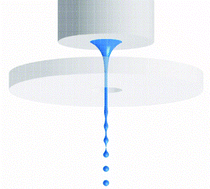A new flow focusing pneumatic nebulizer (FFPN) is evaluated for the analysis of high salt content samples. The analytical performance for axially and radially viewed ICP-AES analysis is presented for the FFPN and compared with that of a commercially available Sea Spray nebulizer (SSN). Figures of merit such as sensitivity, precision and limits of detection, obtained with a multi-element standard solution containing 2% NaCl, are used to compare both nebulizers. In general, the sensitivity, precision and limits of detection obtained with the FFPN are similar to or better than those obtained with the SSN, but the latter nebulizer is working at a liquid uptake rate five times higher. Long term stability and blockage tests carried out with the FFPN demonstrate that, due to its special design and working principle, this nebulizer is capable of continuous operation with high salt content (3%) solutions without clogging or degradation of the analytical signal.
You have access to this article
 Please wait while we load your content...
Something went wrong. Try again?
Please wait while we load your content...
Something went wrong. Try again?


 Please wait while we load your content...
Please wait while we load your content...